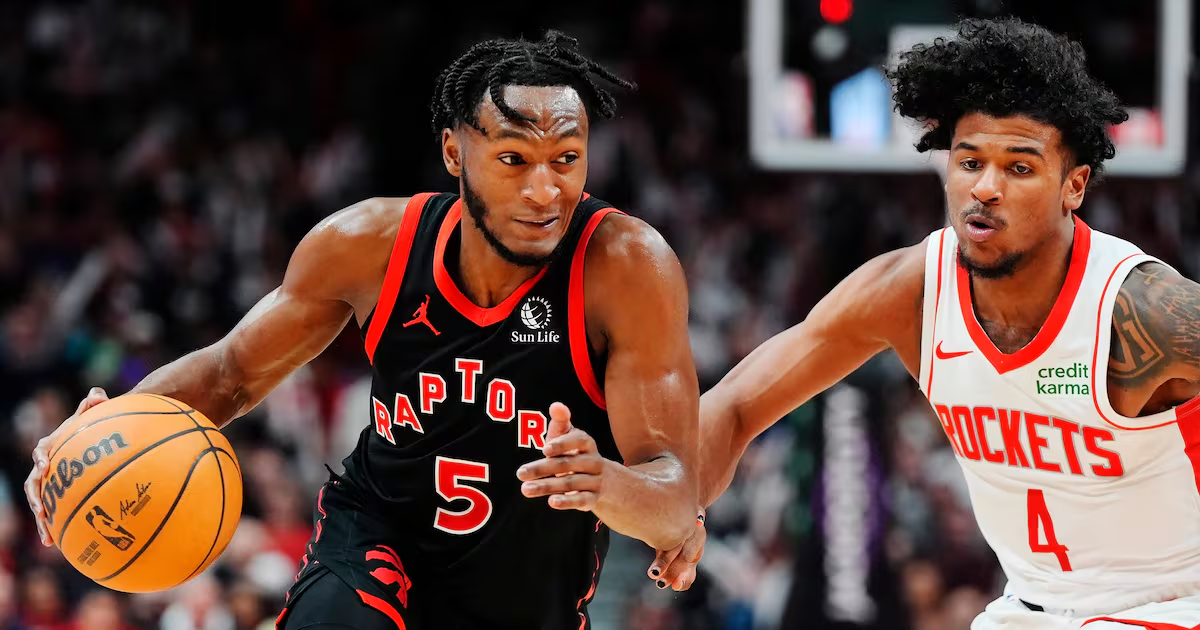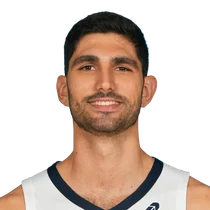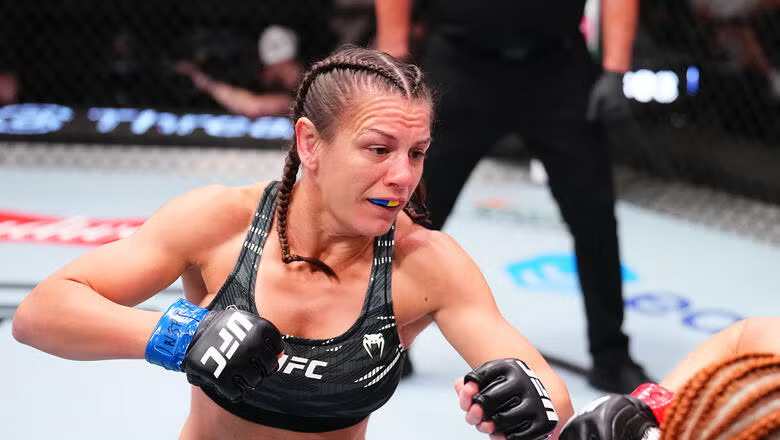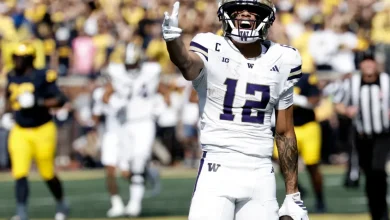Raptors not worried about Quickley’s slow start

TORONTO – Immanuel Quickley isn’t hanging his head.
The Raptors’ point guard was one of the last players in the gym following a Monday morning practice at OVO Athletic Centre. After scrimmaging with some of his younger teammates, Quickley stuck around and sat on the far side of the facility, watching film with Brandon Ingram.
When Toronto acquired Ingram from New Orleans last February, people inside and outside of basketball wondered how he would fit next to the team’s core players, and vice versa. After all, Scottie Barnes and RJ Barrett play similar positions, occupy similar spots on the court, and share some similar strengths and weaknesses.
Many of those concerns have already been alleviated. Ingram’s presence hasn’t stopped Barnes and Barrett from getting off to tremendous starts – through seven games, all three forwards are averaging more than 20 points and shooting over 50 per cent from the field.
To some surprise, it’s Quickley who has had the hardest time making the adjustment early in the campaign. It does stand to reason. In a starting lineup featuring three high-volume scorers, the point guard has been asked to adapt, spend more time playing off the ball, and sacrifice many of his touches to make sure the others get fed.
That’s what being a point guard is all about, you might say and you would be right. But Quickley has never been a traditional point guard. He’s also used to operating with the ball in his hands and there’s only one to go around.
There’s a learning curve to his revamped role in the offence, and so, staying late to get on the same page as the team’s newest star isn’t just working hard, it’s working smart. And the 26-year-old isn’t lacking for work ethic.
“I try not to look at it as a rough patch,” Quickley said. “Everybody thinks it’s a rough patch but it’s all in how you look at it, [your] perspective. Life could be a lot worse. But just continue to come in every single day, being present, [asking] how can I get better when I’m in a workout or how can I be better when I’m watching film. At the end of the season, I know I’m going to be fine. [I believe] in the work I put in.”
So do his teammates and coaches. Nobody inside of the locker room is worried about him. A seven-game sample size is small in the grand scheme of an 82-game season, and some of Quickley’s struggles should be solved with time and regression. For instance, his track record suggests that his 10-for-36 start from beyond the arc is more of a blip or early-season slump than something to be concerned about. He hit 38 per cent of his three-point attempts last year and 40 per cent the year before. He hasn’t forgotten how to shoot.
“I think we all know that IQ could easily be a 15 [point] and 12 [assist] guy or 20 and 12 guy,” said backup point guard Jamal Shead. “With this team and how we’re set up, it’s going to be different for him because he is playing off ball a little bit more. But he can play off ball. He can shoot the s— out of the ball. I think once he gets his rhythm going, he’s going to make us 10 times better.”
If there’s a concern, it’s that Quickley’s slow start isn’t limited to his shooting woes. His production has been lacking on both ends of the floor. Defensively, he’s had trouble keeping opposing guards in front of him at the point of attack. As the lead guard, some of his shot selection and decision making with the ball has left something to be desired, especially in transition. Even his floater hasn’t been falling – he’s shooting 33 per cent from just outside of the restricted area, down from 42 per cent in each of the past two seasons.
Not having their starting centre in the lineup the past three games, or in full health the previous four contests, has surely played a part. Jakob Poeltl, who has been dealing with a sore back, makes life easier for everybody, especially the point guard. He and Quickley have developed a real chemistry in the pick and roll. Collin Murray-Boyles has filled in admirably but, as head coach Darko Rajakovic noted, the rookie big man is focused on learning the NBA game more so than making other players better at this early stage of his career. Poeltl practised in full on Monday and could return as early as Tuesday against Milwaukee.
But, to the point that Rajakovic has made a couple times this week, there isn’t a “secret formula” or “magic wand” to turn Quickley into the player they need him to become. There’s bound to be an adjustment period. Raptors fans might recall that Kyle Lowry got off to a slow start in 2018-19, as his role shifted with the addition of Kawhi Leonard. Fred VanVleet struggled early in his last season with Toronto, as he was asked to defer to Barnes.
Usage rate is a measure of the possessions that a player ends with a field goal attempt, free throw attempt or turnover while they are on the court. A year ago, Quickley’s usage was just under 25 per cent, only trailing Barrett (28 per cent) and Barnes (26 per cent). So far, it’s at 19 per cent this season – fifth on the team and behind the rookie Murray-Boyles.
Theoretically, sharing the floor with Ingram should end up being beneficial for Quickley, as it’s been for Barrett and Barnes, but first he needs to figure out how to do more with less. With the defence fixated on Ingram, Barrett is getting cleaner looks and has been one of the league’s most efficient scorers, while Barnes is excelling in a more natural role as a finisher on offence and wrecking ball on defence.
This is not how Quickley imagined starting the new season, coming in healthy and fresh off a productive off-season. The young vet spent the summer running track and focusing on his diet to improve his strength and conditioning. He was looking forward to turning the page and bouncing back after his first full season in Toronto was riddled with injuries. Of course, there’s still plenty of time to do that.
“I’m always confident, whether the ball is going in or not,” Quickley said. “I’m going to keep shooting. The best shooters keep shooting. But, really, it’s not just about me. It’s about staying in the moment, staying in the present, and trying to help the team win games.”
It shouldn’t be hard to stay patient less than two weeks into the season. Quickley and the Raptors are doing just that, but it should be noted, there are people high up in the organization who are keeping a close eye on how the point guard’s play progresses over the course of the campaign. They gave him a pass for last season, understanding that injuries limited him to 33 games, but they need to start seeing some return on investment.
The five-year, $175 million contract he signed in the summer of 2014 raised some eyebrows around the league. In New York, Quickley had been typecast as a combo guard and sparkplug off the bench. The trade to Toronto came with the opportunity to prove he can lead a team as an above average starter, if not a fringe all-star, and earn the type of money that the Knicks weren’t willing to pay him.
The Raptors still believe that he can be that player, even if they haven’t seen it for an extended period. And if he’s not? That would present an interesting dilemma – now and in the future.
In the short term, Rajakovic is tasked with winning games and has a more reliable defender on his bench in the sophomore Shead. With the starters stumbling out of the halftime break in Cleveland on Friday, Shead replaced Quickley less than two minutes into the third quarter and wound up forcing a near even split in second-half playing time.
On the season, the team has outscored opponents by 15 points in Shead’s minutes. They’ve been outscored by 25 with Quickley on the floor. Their roles aren’t likely to flip any time soon, but Rajakovic is coaching to higher expectations this season; outside of Ingram and Barnes, nobody’s minutes are guaranteed.
As for the bigger picture, the Raptors are paying their starters $156.5 million this season, nearly $2 million more than the league’s salary cap. The extension that Poeltl signed last summer doesn’t kick in until 2027, just as Barrett’s contract expires. If they’re looking to shed salary, the thinking was that Barrett might be the expendable piece, and his inclusion in trade talks over the summer seemed to corroborate that belief. But, at least to this point, the Canadian swingman is doing exactly what he needs to do to prove he’s a long-term fit with this group.
The onus is on Quickley to do the same.
“He’s not playing his best basketball right now and that’s fine,” Rajakovic said. “That’s why he has his teammates to help him. Not everybody can carry an 82-game long season and be perfect. All he needs to do is take one day at a time and be one per cent better [each day]. What I can tell you is that he’s putting a lot of work in, a lot of effort. He cares so much and that’s why it’s frustrating for him because he’s going through this rough [stretch]. But it’s completely fine. I have complete trust in him and his work.”





